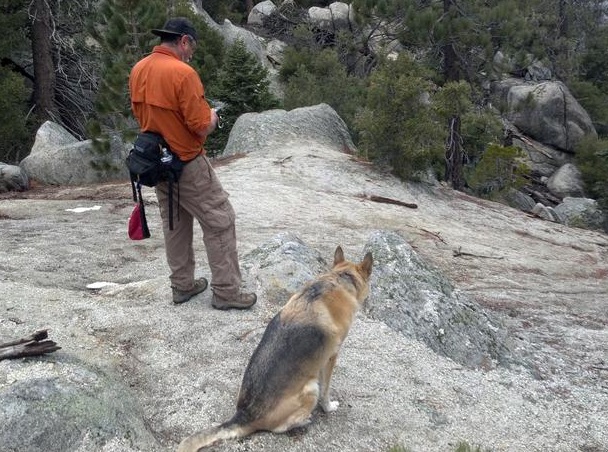Dive into the heart of nature with Anthony Smith, your go-to blogger for all things CBD and Cannabis since 2014. Alongside my loyal companion, Scatter, we’ve traversed the back trails of Phoenix, AZ, uncovering the purest and most effective products for you. Our journey is not just about exploration but about bringing you reviews and insights on CBD and Cannabis products that truly make a difference.

Whether you’re here for the first time or returning for more of our adventures and recommendations, you’ve found the right place. Let’s embark on this journey together, where nature meets wellness.
- Hemp Based Creams for Arthritis – Do they work?
Imagine smoothly applying an over-the-counter hemp topical pain relief cream that helps with pain. Osteoarthritis brings about chronic and repeating inflammation in the connective tissues, which cushion our joints and keep our bones from rubbing closely together. Hemp pain relief products can ease the persistent pain of arthritis by reducing the inflammation in the joint tissues. A hemp roll-on pain relief product is especially handy for this purpose because it’s clean and easy to use.
Variety in Hemp Cream Options Since many ailments stem from inflammation, the same hemp creams can address various issues. Beyond creams, there are other hemp products like gels and balms, each offering unique benefits.
The feel of a product can be a big deal for many, so there are different textures like gels or balms, alongside creams. For pain relief on the go, consider a roll-on product to keep your hands clean and make applying relief easy, even when you’re busy.
All these hemp pain relief creams are meant for topical use. This means you apply them directly to where it hurts instead of taking a pill, sending those beneficial nutrients straight to where they’re needed.
How to Use Hemp Cream for Pain and Inflammation Choosing to use a hemp cream for its anti-inflammatory properties is simple. Apply it to clean, dry skin over the sore area up to three or four times daily as needed. These creams are efficient; a small amount spreads far. Just remember not to apply on broken skin or near your eyes.
Hemp is a mild, non-addictive substance, making it safe for daily use if necessary.
Do Hemp Creams Work? Yes! Can hemp creams actually relieve pain? Absolutely – our FDA-registered hemp cream effectively treats pain from sore muscles and joints. When applied, it releases a bunch of natural botanical compounds to ease your pain.
Many have discovered hemp-based creams as a fantastic solution for everyday discomfort, proving its effectiveness in pain relief.
- Don’t Have Delta 8 or 10 in Florida
Good ‘ol Florida is moving closer to making it illegal to have hemp products that include delta-8 and delta-10 THC after the Senate all agreed on a new bill this week.
The bill is now headed to the Florida House of Representatives for consideration, as reported by the Tampa Bay TV station WTSP.
However, a similar bill that’s in the House hasn’t been fully discussed there yet, according to WTSP.
Since the 2018 U.S. Farm Bill made hemp legal, more and more stores that don’t have licenses have started selling products with delta-8 THC in Florida. Delta-8 THC is a weaker type of marijuana.
The interest in delta-8 THC in Florida is probably because the state only allows marijuana for medical reasons, not for recreational use by adults.
People in the industry are hoping that the next update to the Farm Bill will give clearer rules and federal oversight for products made from hemp.
But until that happens, it’s up to the lawmakers in each state to figure out what to do with these products for now.
The update to the Farm Bill was pushed back from last year to 2024.
- What Dosage of CBD Should I Give My Dog?
Determining the right CBD dosage for your dog might seem tricky at first, but with advice from your vet or a pet wellness expert, it can become clearer. Here’s a breakdown to guide you through understanding CBD dosages for your dog.
Different CBD products, like treats or oils, mean the dosage can vary. Knowing a few key factors makes choosing the right amount easier.
Remember, each dog is unique, so observing how your dog reacts to CBD and adjusting the dose is crucial.
The general rule
The general rule for CBD dosage is based on your dog’s weight. A starting point is 0.25mg of CBD per pound. For example, for a dog weighing 9 pounds, you’d begin with a dose of 2.25mg.
Usage frequency depends on what you’re treating. For stress, you might use CBD as needed, but regular dosages help prevent more severe issues.
Age also plays a role in how CBD affects your dog. Younger dogs might require a higher dose compared to older ones to achieve the same effect.
The type of CBD product also matters. Tinctures, being more pure, may work faster than treats, which have additional ingredients affecting absorption.
Always start with the recommended dosage on the product and adjust based on your dog’s response. You might need to increase or decrease the amount given.
To understand how much CBD is in a product, read its packaging carefully. It should tell you the total CBD content and, for oils, how much is in each drop or dropper.
Calculating the dosage for oils might need some math. If a dropper contains 35mg of CBD, and there are about 30 drops in it, each drop has around 1.2mg of CBD. This makes it easier to figure out your dog’s starting dose.
Consulting with a vet before starting CBD is always a good idea, ensuring it’s a suitable option for your pet.
CBD offers many benefits for dogs, from supporting their immune system to helping with relaxation and discomfort. With the right product and dosage, CBD can be a valuable addition to your dog’s wellness routine.
- What’s The Word About Dogs and CBD
Understanding CBD for Your Dog
CBD is getting a lot of buzz for good reasons in the health world. But, it also raises a bunch of questions.
Are you curious about CBD for your dog? You might wonder what it is, how it works, if it’s safe, and if it really works. Finding answers to these big questions about CBD can show you how it might make your dog’s life better and happier.
Let’s dive into CBD, explore its uses, and see why it could be a great choice for your furry friend!
What is CBD?
First off, what is CBD, and where does it come from?
CBD stands for “cannabidiol.” It’s a natural part of the cannabis plant.
There are two types of cannabis plants: marijuana and hemp. They differ in their THC content. THC is what makes marijuana famous for its “high.” Marijuana has a lot of THC. Hemp has very little, no more than 0.3%. CBD for dogs comes from the hemp plant.
Is CBD Legal?
Yes, CBD products from hemp are legal everywhere in the U.S. So, you won’t have trouble finding them.
Will CBD Make Your Dog High?

CBD from hemp has very little THC, so it won’t make your dog high. Plus, it’s not addictive. Your dog can enjoy its benefits without any worries.
How Does CBD Work?
CBD works with the body’s endocannabinoid system. Think of this system like the body’s management team for appetite, sleep, pain, and mood.
Both humans and dogs have this system. Its job is to keep everything in balance.
The endocannabinoid system has receptors all over the body. CBD interacts with these receptors, helping to keep the body in balance.
How Can CBD Help My Dog?
Let’s look at the ways CBD can help your dog:
- Mobility: CBD can help older dogs feel more lively, supporting healthy joints and flexibility.
- Pain: If your dog hides pain, CBD might help. It supports a normal inflammatory response, helping with soreness and stiffness.
- Stress: Dogs get stressed too. CBD has a calming effect that can help them relax.
- Wellness: Like vitamins for us, CBD can support your dog’s immune system and overall health.
Is CBD Safe for Pets?
CBD from hemp is safe for dogs. But, products from the marijuana plant are not because they have too much THC.
Side effects are rare but watch for dry mouth, sleepiness, low blood pressure, or diarrhea. Always start with a small dose and watch how your dog reacts.
What CBD Products Are There for Dogs?
- CBD Oils: Easy to measure and give, either directly or in food.
- CBD Bites and Chews: Tasty treats that make giving CBD easy.
- CBD Topicals: Good for the skin and can be applied directly.
CBD is a helpful, safe option for your dog’s health. With the right product, you can help your dog live a happier, healthier life.
- The Secret Weapon Against Pain – How CBD Oil Can Help
CBD has gained tremendous traction as an alternative to opioid pain medications in light of the opioid crisis, yet still carries risks that must be considered when making decisions regarding medication treatment plans. Studies suggest that CBD may offer relief for a range of pain-related conditions while decreasing dose requirements to treat them effectively.
CBD works by engaging specific receptors in the brain to alter your perception of pain. Furthermore, its anti-inflammatory properties address its source. Furthermore, it may interact with chemicals within your body that promote anxiety or mood disorders thereby helping regulate them.
People who dislike taking pills may benefit from trying tinctures under their tongue to quickly absorb CBD into the bloodstream or purchasing creams, salves, lotions and patches which can be directly applied to their skin for relief from aches, burning, tingling and stiffness caused by chronic back pain, arthritis and muscle spasms.
One small study by researchers showed that one 250 milligram dose of CBD significantly lowered resting blood pressure among healthy men, suggesting it could help lower risk factors associated with cardiovascular disease and other chronic health problems. A later 2020 study found that CBD gel significantly reduced pain among people suffering from osteoarthritis for three months at least; those using the product did significantly better than those who received placebo products, improving both their worst pain score as well as their WOMAC Arthritis Index rating of physical function.





